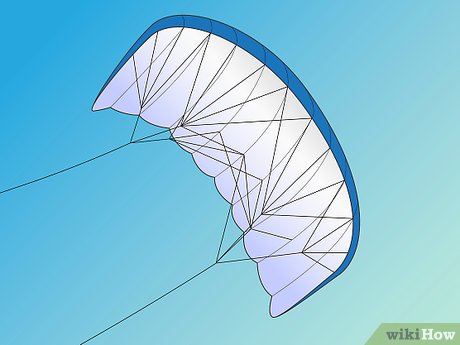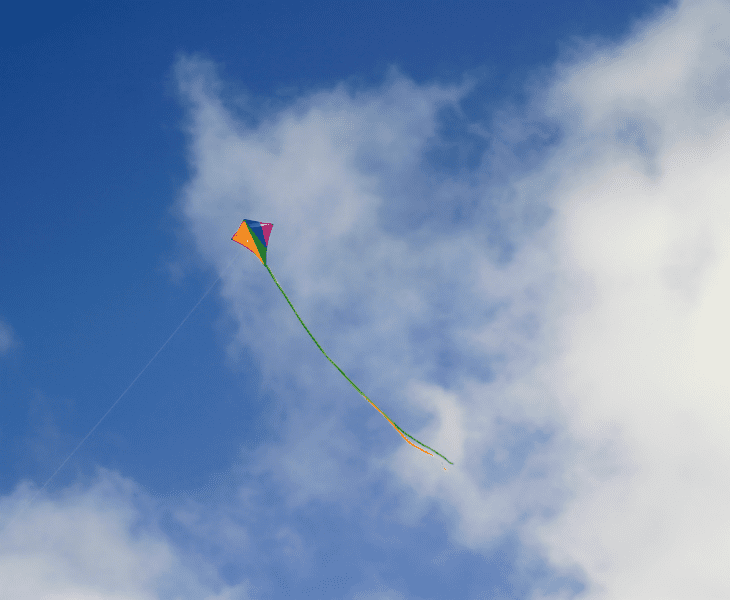Flying a kite is often associated with breezy days and endless skies, but what if you find yourself wanting to launch a kite without the luxury of wind? Don't fret! With some creativity and knowledge, you can still enjoy this delightful pastime. In this blog post, we'll explore practical tips for flying a kite without wind, and you’ll be well on your way to mastering the art of kite flying in any situation!
Understanding the Basics of Kite Flying

Before we dive into the tricks for flying a kite without wind, it's essential to understand some fundamental concepts of kite flying. Knowing how kites work, their parts, and the conditions they thrive in can make your experience much more enjoyable.
The Anatomy of a Kite
A kite typically consists of several key components:
- Frame: This is the skeleton of the kite, usually made of lightweight materials like bamboo or plastic.
- Fabric or Sail: This is the part that catches the wind, usually made of ripstop nylon or polyester.
- Tail: The tail stabilizes the kite during flight and can add visual flair.
- Line: This is the string or cord that you hold onto while flying the kite.
How Kites Fly
Kite flying is all about harnessing the wind’s power. When wind flows over the surface of the kite's sail, it creates lift and allows the kite to ascend into the air. The angle at which the kite catches the wind plays a crucial role—too steep, and the kite might stall; too shallow, and it won't rise effectively.
The Best Conditions for Kite Flying
Traditionally, a steady wind of around 5-25 mph is ideal for flying a kite. However, it’s not always easy to find that perfect gust! Factors such as local geography, weather, and even the time of day can influence wind conditions. Early mornings or late afternoons often provide calmer air, while open fields or beaches are excellent for finding suitable wind.
But what happens when the wind just doesn’t cooperate? Understanding the anatomy and fundamentals can help you adapt your techniques, even in still air. Here are some insights:
Types of Kites
There are various types of kites, and each performs differently under various conditions:
- Has a Stunt Kite: These kites are typically smaller and can perform tricks, making them easier to control without strong wind.
- Box Kites: Larger and capable of generating lift even in low winds, box kites may be a good option.
- Power Kites: Designed to catch more wind, they can possibly generate lift even in lighter air.
In summary, an understanding of kite anatomy, how they fly, and the best conditions can equip you with the knowledge needed to take on the challenge of flying a kite without wind. Stick around for the upcoming sections, where we’ll delve into some practical tips to make this experience enjoyable and successful!
Also Read This: Guide to Screen Magnification on Dailymotion
3. Why Flying a Kite Without Wind Is Possible

You might think that flying a kite without wind is a bit of an oxymoron, but surprisingly, it can be done! The key is understanding how kites work and utilizing different techniques and equipment to simulate the conditions needed for flight.
First off, let’s talk about the physics involved. Kites traditionally rely on wind to provide lift, but in the absence of a breeze, there are some nifty alternatives:
- Running: Just like those childhood days when you dashed around the park, you can generate enough lift by running with the kite. As you sprint, the movement can create airflow under the kite, giving it the lift it needs to soar.
- Launching Methods: Using a friend or a drone can also help! Have someone else run while you hold the kite, or attach the kite to a drone that lifts it up into the air before you let it go. These methods help get the kite off the ground even without natural wind.
- Hot Air: Believe it or not, hot air rising can also help! You can create thermal currents by using a flame or even placing the kite near a sunny surface to heat the air beneath it.
- Use of Energy Sources: Another interesting technique is using a fan or another mechanical device to create artificial wind. This creates consistent airflow that can keep the kite flying.
While it may seem challenging to fly a kite without wind, it’s all about adapting to the environment and thinking creatively. Whether you run with your kite or use a bit of technology, flying a kite can still be a delightful experience even in calm conditions!
Also Read This: How to Make Small Roses with Paper
4. Essential Equipment for Windless Kite Flying

Flying a kite without wind requires a few adjustments and some essential gear. Here’s a handy checklist to help you prepare for your windless kite flying adventure:
| Equipment | Description |
|---|---|
| Lightweight kite | A lightweight kite is crucial for windless conditions as it requires less lift to get airborne. Look for kites made from materials like plastic or thin fabric. |
| Long, sturdy line | A longer line gives you more control and distance. It’s also beneficial for running or getting the kite airborne before it starts to descend. |
| Wheels or a skateboard | If you're quite energetic, consider using wheels for speed! A skateboard or any wheeled device can help you gain momentum when running. |
| Fans or blowers | Create artificial wind! Battery-operated fans or blowers can help provide the necessary lift for your kite. Just be sure they’re positioned appropriately! |
| Friends | Having a buddy system can make things easier. One person can hold the kite while the other runs or controls any mechanical helpers. |
Don’t forget to also dress comfortably and come prepared with plenty of water. Flying a kite can sometimes be a workout, especially when you're creating wind or sprinting around! Remember to enjoy the process, and with the right equipment and techniques, you’ll find that flying a kite without wind can be just as thrilling as when the breeze is blowing.
Also Read This: Discovering Dailymotion Features for Beginners and Enthusiasts
5. Techniques for Getting Your Kite in the Air

Getting your kite airborne without the help of a strong wind can be a bit tricky, but don’t lose hope! Here are some handy techniques to help you launch that kite into the sky.
- The Run and Launch Method: This is a classic technique. Grab the string with one hand and hold the kite with the other. As you run, let the kite catch whatever little breeze it can. The increase in speed will help the kite lift off the ground. Make sure to keep it slightly tilted against the wind direction!
- The Ground Launch: Place your kite on the ground while you’re ready with a small amount of wind, or even while you create momentum yourself. Hold the strings taut and gently pull on them to get the kite to rise. Keep in mind the angle at which it sits; a slight tilt can make all the difference.
- A Friend’s Assist: Having a buddy can make launching much easier! While one person holds the kite steady, the other can run a short distance to generate some wind. When you feel the kite lifting, gradually pull on the string to bring it higher.
- Use a Tension Rod: Determining the correct tension is crucial. If your kite has a flexible frame, using rods to stabilize it can help it maintain shape and stability during launch. Place these strategically, and they’ll provide the necessary push to help it get into the air.
- Timing and Patience: Sometimes, it’s all about waiting for the right moment. Look for shifts in air currents, or for even the slightest breeze. If you’re patient and ready to make your move at the right time, you’ll find success.
Remember, practice makes perfect! Even if it takes a few tries, you’ll get the hang of launching your kite in no time.
Also Read This: Step-by-Step Instructions to Perform the Moonwalk Using Dailymotion Videos
6. Tips for Controlling Your Kite in Low Wind Conditions
Once your kite is in the air, the real challenge begins. Controlling your kite in low wind conditions requires a different approach than flying in strong breezes. Here are some effective tips to help you maneuver your kite smoothly:
- Keep It Light: Try to avoid heavy string or accessories attached to the kite. Using lighter materials can significantly enhance responsiveness, allowing you to maneuver more freely.
- Gentle Movements: In low wind, large jerky movements can cause your kite to nosedive. Instead, use gentle and controlled motions to steer. Small pulls on the string can help you gain altitude and manage turns.
- Is it Flying or Floating? Understand the difference between your kite flying actively versus merely floating. If it’s floating and struggling for lift, try to pull the string slowly on a slight angle to coax it into a more favorable position.
- Adjust the Angle: Experiment with the angle of the kite. If your kite is struggling, tilt it slightly upward to maximize the minimal lift available. Sometimes, slight adjustments can create the perfect balance.
- Stay Focused on the Horizon: Keep your gaze on the horizon rather than the kite. This will help you anticipate any changes in wind direction. Being in tune with the environment is key to effective control!
By mastering these control techniques, you’ll make the most out of those low wind days. It might take some practice, but you’ll be flying smoothly and skillfully in no time!
Also Read This: Download Dailymotion Videos for Free Using Online Tools
7. Safety Precautions When Flying a Kite
Flying a kite can be an exhilarating experience, but it's essential to prioritize safety, especially when conditions aren't ideal or when there’s little to no wind. Here are some practical safety precautions to keep in mind:
- Choose an Open Space: Always fly your kite in a spacious area away from trees, power lines, and busy roads. This minimizes the risk of accidents and entanglements.
- Use Appropriate Equipment: Ensure your kite is made from durable materials and check that all components (like the string and handles) are in good condition before taking off.
- Be Mindful of Others: Keep a safe distance from people and animals. You wouldn’t want your kite to accidentally hurt anyone or mess with their space.
- Watch for Adverse Weather: Conditions can change quickly, even with little wind. Be cautious of sudden gusts or storms that may develop.
- Have a Spotter: When flying in low wind, having a friend to help watch the surroundings can be very helpful. They can alert you to any obstacles or issues you might not see.
In addition to these tips, always trust your instincts. If something feels off or unsafe, it’s okay to call it a day. Remember, the goal is to have fun and stay safe while enjoying the experience of kite flying!
Also Read This: How to Create a Channel on Dailymotion and Upload Your Own Videos
8. Fun Kite Flying Activities to Try Without Wind
Just because the winds aren’t blowing doesn’t mean you can’t enjoy the thrill of flying a kite! Here are some creative activities to try when Mother Nature isn’t cooperating:
- Kite Building Workshop: Why not dedicate a day to designing and building your own kite? Use lightweight materials like plastic bags or newspaper, and turn it into a fun DIY project. Personalizing and crafting your kite can be just as rewarding as flying it!
- Kite Running: Attach a light leash to your kite and run with it! The idea is to gain enough momentum yourself to get the kite gliding in the air, especially if it has a light frame.
- Stunt Tricks on the Ground: If you have a stunt kite, practice performing tricks on the ground. It can be surprisingly fun to learn how to maneuver and control your kite, even without air momentum.
- Artwork with Kites: Create beautiful artwork by decorating the blank surfaces of kites with paints, markers, or stickers. This is a great way to express your creativity, and they can be displayed in your room no matter the flying conditions!
- Obstacle Course: Set up a fun obstacle course on the ground and practice flying your kite through it (the kite may not be airborne, but it can be part of the game!). Move around obstacles and see how creatively you can navigate your kite.
These activities will not only keep your enthusiasm alive but also enhance your skills for when the perfect wind conditions finally arrive. Remember, the key to kite flying isn't just about the wind; it's about enjoying the process and making the most of every moment!
Conclusion and Final Thoughts
Flying a kite is often associated with the thrill of dancing with the wind, but what if you find yourself in a situation with no breeze? While it may seem challenging, there are several practical ways for beginners to enjoy this fun activity even without natural wind currents.
Key Takeaways:
- Understanding your kite's design is essential; lighter kites may be more responsive to slight movements.
- Utilizing human power—running or pulling your kite to generate lift can be effective.
- Experimenting with ground-based methods can create minor air movements, such as waving or moving the kite side to side.
- Consider using a fan or finding open areas where even minor temperature changes might create lift from thermals.
In addition, practicing with your kite on the ground can help you become more familiar with its control and behavior, enabling you to make the most of any opportunities that arise, whether they be light gusts or the thrill of a more interactive flying technique.
In summary, while flying a kite without wind can be a unique challenge, by employing creativity and incorporating the strategies outlined above, beginners can still enjoy a rewarding experience. Embrace the process, experiment with different techniques, and above all, have fun as you learn the art of kite flying regardless of the weather conditions!
 admin
admin








